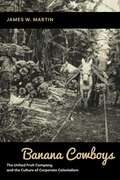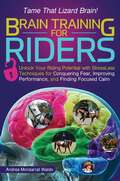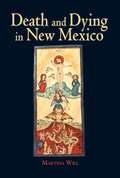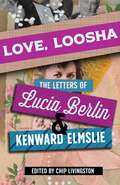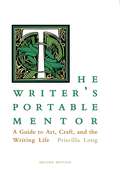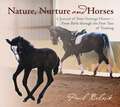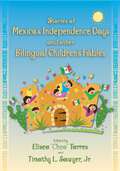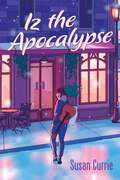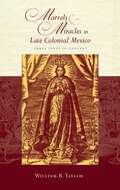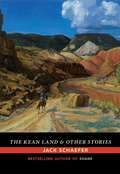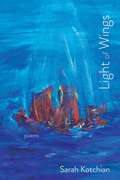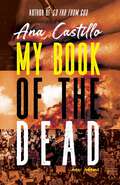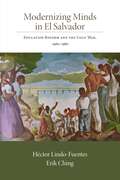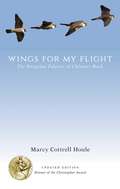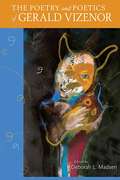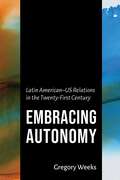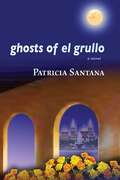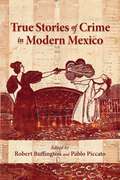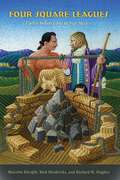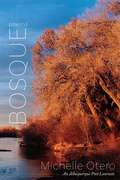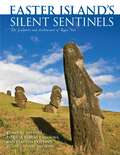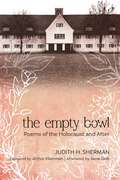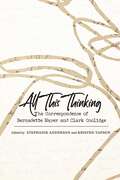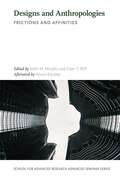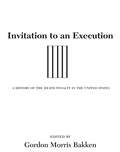- Table View
- List View
Banana Cowboys: The United Fruit Company and the Culture of Corporate Colonialism
by James W. MartinThe iconic American banana man of the early twentieth century—the white &“banana cowboy&” pushing the edges of a tropical frontier—was the product of the corporate colonialism embodied by the United Fruit Company. This study of the United Fruit Company shows how the business depended on these complicated employees, especially on acclimatizing them to life as tropical Americans.
Brain Training for Riders
by Andrea Monsarrat WaldoDid you know there is an area of your brain known as the Lizard Brain that thinks only about the immediate moment and your means of survival? Yes, in certain circumstances, your Rational Brain can effectively shut down and you are at the mercy of a reptile...dry-mouthed, sweating, queasy, unable to think clearly—even though you know better. When does the Lizard Brain run the show? It can happen in any number of unfamiliar, uncomfortable, challenging, or stressful riding situations. But here's the thing: with the right kind of training, you can learn to manage the reptile within, which leads to greater confidence with horses, better riding performance, and ultimately, happiness at the barn, at shows, and everywhere in between. Andrea Waldo teaches you how to:Handle uncomfortable emotions, such as fear, anger, anxiety, and embarrassment.Hone your mental game and focus your riding time to get the most out of your hours in the saddle.Care for your emotional injuries the same way you would care for an injured horse.Produce a state of Focused Calm and tap into the skills you have (whether you know it or not!) to ensure an outstanding ride.
Death and Dying in New Mexico
by Martina WillIn this exploration of how people lived and died in eighteenth- and nineteenth- century New Mexico, Martina Will weaves together the stories of individuals and communities in this cultural crossroads of the American Southwest. The wills and burial registers at the heart of this study provide insights into the variety of ways in which death was understood by New Mexicans living in a period of profound social and political transitions.This volume addresses the model of the good death that settlers and friars brought with them to New Mexico, challenges to the model's application, and the eventual erosion of the ideal. The text also considers the effects of public health legislation that sought to protect the public welfare, as well as responses to these controversial and unpopular reforms. Will discusses both cultural continuity and regional adaptation, examining Spanish-American deathways in New Mexico during the colonial (approximately 1700–1821), Mexican (1821–1848), and early Territorial (1848–1880) periods.
Love, Loosha: The Letters of Lucia Berlin and Kenward Elmslie
by Lucia Berlin Kenward ElmslieAt the time of her death in 2004, Lucia Berlin was known as a brilliant writer of short stories, beloved by other writers but never achieving wide readership or acclaim. That changed in 2015 with the publication of A Manual for Cleaning Women, a collection of some of her best work. Almost overnight, Lucia Berlin became an international bestseller.Love, Loosha is the extraordinary collection of letters between Lucia Berlin and her dear friend, the poet and Broadway lyricist Kenward Elmslie. Written between 1994 and 2004, their correspondence reveals the lives, work, and literary obsessions of two great American writers. Berlin and Elmslie discuss publishing and social trends, political correctness, and offending others and being offended. They gossip. They dish. They entertain.Love, Loosha is an intimate conversation between two friends—one in which we are invited to participate, and one that will give fans of Lucia Berlin and Kenward Elmslie much pleasure and fresh insight into their lives and work.
The Writer's Portable Mentor: A Guide to Art, Craft, and the Writing Life, Second Edition
by Priscilla LongDesigned to mentor writers at all levels, from beginning to quite advanced, The Writer&’s Portable Mentor offers a wealth of insight and crafting models from the author&’s twenty-plus years of teaching and creative thought. The book provides tools for structuring a book, story, or essay. It trains writers in observation and in developing a poet&’s ear for sound in prose. It scrutinizes the sentence strategies of the masters and offers advice on how to publish. This second edition is updated to account for changes in the publishing industry and provides hundreds of new craft models to inspire, guide, and develop every writer&’s work.
Nature, Nurture and Horses
by Paul BelasikFollow along as four young horses—Corsana, Kara, Elsa, and Escarpa—leave their babyhood behind and begin their training for future careers as sport horses, well schooled in the art of classical dressage.Renowned rider, trainer, author, and equestrian philosopher Paul Belasik shares the daily schedule, weekly events, and his own musings over each horse's character, physicality, athletic ability, and training as the months and seasons pass. Belasik's honest and enlightened journal entries give the reader an inside look at training horses according to the classical system he has used for almost 40 years. His style of writing allows the reader to &“live&” the experiences as he did —
Stories of Mexico's Independence Days and Other Bilingual Children's Fables
by Eliseo “Cheo” TorresThis collection of six bilingual children's stories takes a regional and historical emphases. Sixteen provides the background of September 16, Mexico's day of independence from Spain, and places it in a present-day context with which children can easily identify. The Little General teaches children about Cinco de Mayo through a young boy who helps save his village from the approaching French army. The remaining four stories are fables that impart important moral themes to young readers. In Sweetie, the Lion that Thought He Was a Sheep, children learn to respect different backgrounds and abilities. A Parrot for Christmas demonstrates the friendship children can share with animals and Orlando, the Circus Bear emphasizes the importance of compassion toward animals. A Horse Called 'Miracle' teaches the value of helping others in need. Each story is followed with discussion questions to help children recall the story's key details and suggestions for classroom activities designed to stimulate curiosity and expand knowledge of historical events.
Iz the Apocalypse (The Métier Quartet)
by Susan CurrieA White Pine Award nominee and a Junior Library Guild Gold Standard Selection! A fierce voice longs to break free.A spark ignites inside fourteen-year-old Iz Beaufort when she hears school music group Manifesto perform. Even though she hasn&’t written a song since That Place, she recognizes herself in the moving performance and longs to be part of the group, certain that they might actually understand her. But Manifesto is based at the prestigious Métier School, and Iz has bounced through twenty-six foster homes. Plus, there&’s no way Dominion Children&’s Care would ever send a foster kid to a private school when a public option is available. So Iz does what any passionate, broken, off-the-chart wunderkind might and takes matters into her own hands. Iz fakes her way in only to face a new set of challenges: tuition fees, tough classwork, and new classmates she can&’t immediately identify as friends or foes. And if she can&’t handle all this while keeping how she got into Métier a secret, she could get kicked out of both school and her current home. But a life with music—a life where Iz gets to have a voice—might be worth risking everything.An Apple Books Best Book of 2023!A compassionate, character-driven story that will particularly resonate with music lovers. - Kirkus
Marvels and Miracles in Late Colonial Mexico: Three Texts in Context (Religions of the Americas Series)
by William B. TaylorMiracles, signs of divine presence and intervention, have been esteemed by Christians, especially Catholic Christians, as central to religious belief. During the second half of the eighteenth century, Spain&’s Bourbon dynasty sought to tighten its control over New World colonies, reform imperial institutions, and change the role of the church and religion in colonial life. As a result, miracles were recognized and publicized sparingly by the church hierarchy, and colonial courts were increasingly reluctant to recognize the events. Despite this lack of official encouragement, stories of amazing healings, rescues, and acts of divine retribution abounded throughout Mexico.Consisting of three rare documents about miracles from this period, each accompanied by an introductory essay, this study serves as a source book and complement to the author&’s Shrines and Miraculous Images: Religious Life in Mexico Before the Reforma.
The Kean Land and Other Stories
by Jack SchaeferThe classic Western short stories in this Jack Schaefer collection explore the changing and often challenging truths found throughout the American West. The featured novella, &“The Kean Land,&” tells the story of young Ben Hammon as he arrives in western Colorado after the death of his parents to live with his small-town lawman uncle. The drama unfolds as Ben learns the ways of the land and the people who live there—including the Kean family. As &“progress&” pursues there is a dramatic price the Keans and others must pay to keep their land in this once hostile territory. How much blood must those who love the land pay in order to stay?
Light of Wings: Poems (Mary Burritt Christiansen Poetry Series)
by Sarah KotchianThis haunting collection merges spirit and nature in a voice both elegiac and celebratory. Kotchian explores our deep connection to the natural world, one increasingly at risk even as it continues to surprise and inspire. From meditations on the dangers of global warming to supporting a friend with cancer, from grieving the loss of her own mother to celebrating nature from New Mexico to a wild Scottish island, the poems celebrate both solitude and companionship and enlarge our concept of belonging and community, offering us threads of resilience, persistence, and hope.
My Book of the Dead: New Poems
by Ana CastilloFor more than thirty years, Ana Castillo has been mesmerizing and inspiring readers from all over the world with her passionate and fiery poetry and prose. Now the original Xicanista is back to her first literary love, poetry, and to interrogating the social and political upheaval the world has seen over the last decade. Angry and sad, playful and wise, Castillo delves into the bitter side of our world—the environmental crisis, COVID-19, ongoing systemic racism and violence, children in detention camps, and the Trump presidency—and emerges stronger from exploring these troubling affairs of today. Drawings by Castillo created over the past five years are featured throughout the collection and further showcase her connection to her work as both a writer and a visual artist. My Book of the Dead is a remarkable collection that features a poet at the height of her craft.
Modernizing Minds in El Salvador: Education Reform and the Cold War, 1960-1980 (Diálogos Series)
by Erik Ching Héctor Lindo-FuentesIn the 1960s and 1970s, El Salvador's reigning military regime instituted a series of reforms that sought to modernize the country and undermine ideological radicalism, the most ambitious of which was an education initiative. It was multifaceted, but its most controversial component was the use of televisions in classrooms. Launched in 1968 and lasting until the eve of civil war in the late 1970s, the reform resulted in students receiving instruction through programs broadcast from the capital city of San Salvador. The Salvadoran teachers' union opposed the content and the method of the reform and launched two massive strikes. The military regime answered with repressive violence, further alienating educators and pushing many of them into guerrilla fronts. In this thoughtful collaborative study, the authors examine the processes by which education reform became entwined in debates over theories of modernization and the politics of anticommunism. Further analysis examines how the movement pushed the country into the type of brutal infighting that was taking place throughout the third world as the U.S. and U.S.S.R. struggled to impose their political philosophies on developing countries.
Wings for My Flight: The Peregrine Falcons of Chimney Rock, Updated Edition
by Marcy Cottrell Houle&“Blends adventure, romance, humor and pathos. . . . Offers vivid descriptions of her sky-diving subjects and the seductive beauty of the wilderness.&”—Chicago Sun-Times&“Well crafted and compelling, a dramatization of the classic conflict between the legitimate interests of conservationists and developers. This is a fine book on several levels, as science, sociology, or a story. Highly recommended.&”—Library JournalForty years ago, the peregrine falcon was on the U.S. endangered species list and many doubted that it would survive. Marcy Houle was a young wildlife biologist observing one of the last remaining pairs—located at a site in southwest Colorado slated for development as a major tourist site. First published in 1991 and winner of several national awards, this book chronicles her work at Chimney Rock along with the recovery of the species. A new preface examines the last thirty years of the peregrine population and its remarkable comeback and culminates with President Barack Obama&’s designation of Chimney Rock as a national monument.
The Poetry and Poetics of Gerald Vizenor
by Deborah L. MadsenThe first book devoted exclusively to the poetry and literary aesthetics of one of Native America&’s most accomplished writers, this collection of essays brings together detailed critical analyses of single texts and individual poetry collections from diverse theoretical perspectives, along with comparative discussions of Vizenor&’s related works. Contributors discuss Vizenor&’s philosophy of poetic expression, his innovations in diverse poetic genres, and the dynamic interrelationships between Vizenor&’s poetry and his prose writings.Throughout his poetic career Vizenor has returned to common tropes, themes, and structures. Indeed, it is difficult to distinguish clearly his work in poetry from his prose, fiction, and drama. The essays gathered in this collection offer powerful evidence of the continuing influence of Anishinaabe dream songs and the haiku form in Vizenor&’s novels, stories, and theoretical essays; this influence is most obvious at the level of grammatical structure and imagistic composition but can also be discerned in terms of themes and issues to which Vizenor continues to return.
Embracing Autonomy: Latin American–US Relations in the Twenty-First Century (The Americas in the World Series)
by Gregory WeeksGregory Weeks's Embracing Autonomy departs from other general treatments of Latin American-US relations not by putting US policy aside but by bringing in the Latin American and global contexts more closely and thus avoiding the incomplete picture provided by a narrow focus solely on the policies of the United States.The core of autonomy for Latin America from the United States is seen in new, deeper, and more numerous relationships that do not include the United States. The book is not a study of rebellion against the United States, or even a critique of US policy. Instead, it is an examination of the major shifts that have taken place in the region in recent decades and how they have shaped Latin American-US relations.Weeks's book provides a clearer understanding of where Latin America stands vis-à-vis the United States in the early twenty-first century. In doing so, we gain a better sense of the trajectory of Latin American-US relations and how they develop in turbulent times.
Ghosts of El Grullo
by Patricia SantanaHaving left her much-loved San Diego barrio, Yolanda Sahagún is now living in the university dorms when a series of events--her mother dies and her father sells their home--forces her to re-examine her life. Yolanda visits her parents' hometown of El Grullo, Mexico, struggling to understand the ghosts in her life--her mother, her father, and her seemingly idyllic childhood. She fears losing herself in the disintegration of the family. For Yolanda, her father is her enemy (or so she thinks), and in the course of the novel we see him at his best and worst, and we see Yolanda at her best and worst.This is a story of Yolanda's initiation into womanhood and about her fierce struggle to make sure her family does not dissolve. Family and sexual politics; love, death, and abandonment; the struggle to resolve a personal identity in the context of a shattered, first-generation immigrant American family--these are the hugely painful obstructions Yolanda must surmount or incorporate into her own being as she makes her life's journey. Ghosts of El Grullo is a sequel to Santana's critically acclaimed and prize-winning Motorcycle Ride on the Sea of Tranquility.
True Stories of Crime in Modern Mexico (Diálogos Series)
by Robert Buffington and Pablo PiccatoCrime has played a complicated role in the history of human social relations. Public narratives about murders, insanity, kidnappings, assassinations, and infanticide attempt to make sense of the social, economic, and cultural realities of ordinary people at different periods in history. Such stories also shape the ways historians write about society and offer valuable insight into aspects of life that more conventional accounts have neglected, misunderstood, or ignored altogether. This edited volume focuses on Mexico's social and cultural history through the lens of celebrated cases of social deviance from the late nineteenth and early twentieth centuries. Each essay centers on a different crime story and explores the documentary record of each case in order to reconstruct the ways in which they helped shape Mexican society's views of itself and of its criminals.
Four Square Leagues: Pueblo Indian Land in New Mexico
by Rick Hendricks Malcolm Ebright Hughes W. RichardThis long-awaited book is the most detailed and up-to-date account of the complex history of Pueblo Indian land in New Mexico, beginning in the late seventeenth century and continuing to the present day. The authors have scoured documents and legal decisions to trace the rise of the mysterious Pueblo League between 1700 and 1821 as the basis of Pueblo land under Spanish rule. They have also provided a detailed analysis of Pueblo lands after 1821 to determine how the Pueblos and their non-Indian neighbors reacted to the change from Spanish to Mexican and then to U.S. sovereignty. Characterized by success stories of protection of Pueblo land as well as by centuries of encroachment by non-American Indians on Pueblo lands and resources, this is a uniquely New Mexican history that also reflects issues of indigenous land tenure that vex contested territories all over the world.
Bosque: Poems (The Albuquerque Poet Laureate Series)
by Michelle OteroNestled in the heart of Albuquerque is a vibrant cottonwood forest that has flourished for centuries along the Río Grande—providing a home for porcupines, migratory birds, coyotes, and other wildlife as well as a sanctuary for its city residents. Today, in the midst of climate change and the slow drying of the river, the bosque struggles to remain vibrant. As a former Albuquerque Poet Laureate, Michelle Otero champions this beloved Albuquerque treasure. In her debut poetry collection, Bosque, she celebrates the importance of water and the bosque to the people of Albuquerque. Otero shares her reflections on the high desert—where she is rooted, where she draws her strength, and where she has flourished—and she invites readers to do the same.
Easter Island's Silent Sentinels: The Sculpture and Architecture of Rapa Nui
by Kenneth Treister Patricia Vargas Casanova Cristino ClaudioIt may be the most interesting and yet loneliest spot on earth: a volcanic rock surrounded by a million square miles of ocean, named for the day Dutch explorers discovered it, Easter Sunday, April 5, 1722. Here people created a complex society, sophisticated astronomy, exquisite wood sculpture, monumental stone architecture, roads, and a puzzling ideographic script. And then they went about sculpting amazing, giant human figures in stone.This richly illustrated book of the history, culture, and art of Easter Island is the first to examine in detail the island&’s vernacular architecture, often overshadowed by its giant stone statues. It shows the conjecturally reconstructed prehistoric pole houses; the ahu, the sculptures&’ platform, as a spectacular expression of prehistoric megalithic architecture; and the Easter Island Statue Project&’s inventory of the colossal moai sculptures.This publication is made possible in part by a generous contribution from Furthermore: a program of the J. M. Kaplan Fund.
The Empty Bowl: Poems of the Holocaust and After
by Judith H. ShermanIn The Empty Bowl: Poems of the Holocaust and After, Holocaust survivor Judith H. Sherman strives to record trauma through art. Her poems, written largely in the words of a fifteen-year-old survivor, provide historical entry into the Holocaust. Put simply, the poems explore the reality of the events experienced by Sherman in her determination to survive—from first leaving home to illegal border crossings, hiding, capture, imprisonment by the Gestapo, the horrors of the Ravensbrück concentration camp, liberation, and, finally, a full life of joys and challenges that came after, including the unyielding intrusions of the past and hopeful celebration of a compassionate future.
All This Thinking: The Correspondence of Bernadette Mayer and Clark Coolidge (Recencies Series: Research and Recovery in Twentieth-Century American Poetics)
by Stephanie Anderson and Kristen TapsonAll This Thinking explores the deep friendship and the critical and creative thinking between Bernadette Mayer and Clark Coolidge, focusing on an intense three-year period in their three decades of correspondence. These fiercely independent American avant-garde poets have influenced and shaped poets and poetic movements by looking for radical poetics in the everyday. This collection of letters provides insight into the poetic scenes that followed World War II while showcasing the artistic practices of Mayer and Coolidge themselves. A fascinating look at both the poets and the world surrounding them, All This Thinking will appeal to all readers interested in post–World War II poetry.
Designs and Anthropologies: Frictions and Affinities (School for Advanced Research Advanced Seminar Series)
by Eitan Y. Wilf Keith M. MurphyThe chapters in this captivating volume demonstrate the importance and power of design and the ubiquitous and forceful effects it has on human life within the study of anthropology. The scholars explore the interactions between anthropology and design through a cross-disciplinary approach, and while their approaches vary in how they specifically consider design, they are all centered around the design-and-anthropology relationship. The chapters look at anthropology for design, in which anthropological methods and concepts are mobilized in the design process; anthropology of design, in which design is positioned as an object of ethnographic inquiry and critique; and design for anthropology, in which anthropologists borrow concepts and practices from design to enhance traditional ethnographic forms. Collectively, the chapters argue that bringing design and anthropology together can transform both fields in more than one way and that to tease out the implications of using design to reimagine ethnography—and of using ethnography to reimagine design—we need to consider the historical specificity of their entanglements.
Invitation to an Execution: A History of the Death Penalty in the United States
by Gordon Morris BakkenUntil the early twentieth century, printed invitations to executions issued by lawmen were a vital part of the ritual of death concluding a criminal proceeding in the United States. In this study, Gordon Morris Bakken invites readers to an understanding of the death penalty in America with a collection of essays that trace the history and politics of this highly charged moral, legal, and cultural issue. Bakken has solicited essays from historians, political scientists, and lawyers to ensure a broad treatment of the evolution of American cultural attitudes about crime and capital punishment.Part one of this extensive analysis focuses on politics, legal history, multicultural issues, and the international aspects of the death penalty. Part two offers a regional analysis with essays that put death penalty issues into a geographic and cultural context. Part three focuses on specific states with emphasis on the need to understand capital punishment in terms of state law development, particularly because states determine on whom the death penalty will be imposed. Part four examines the various means of death, from hanging to lethal injection, in state law case studies. And finally, part five focuses on the portrayal of capital punishment in popular culture.
